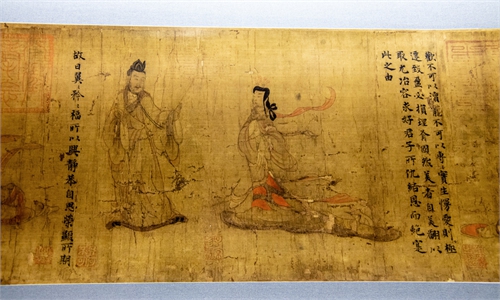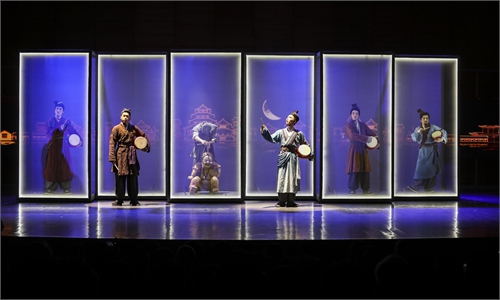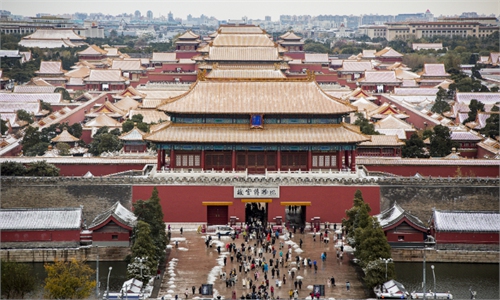ARTS / CULTURE & LEISURE
Chinese artifacts overseas can be better restored by authentic Chinese skills
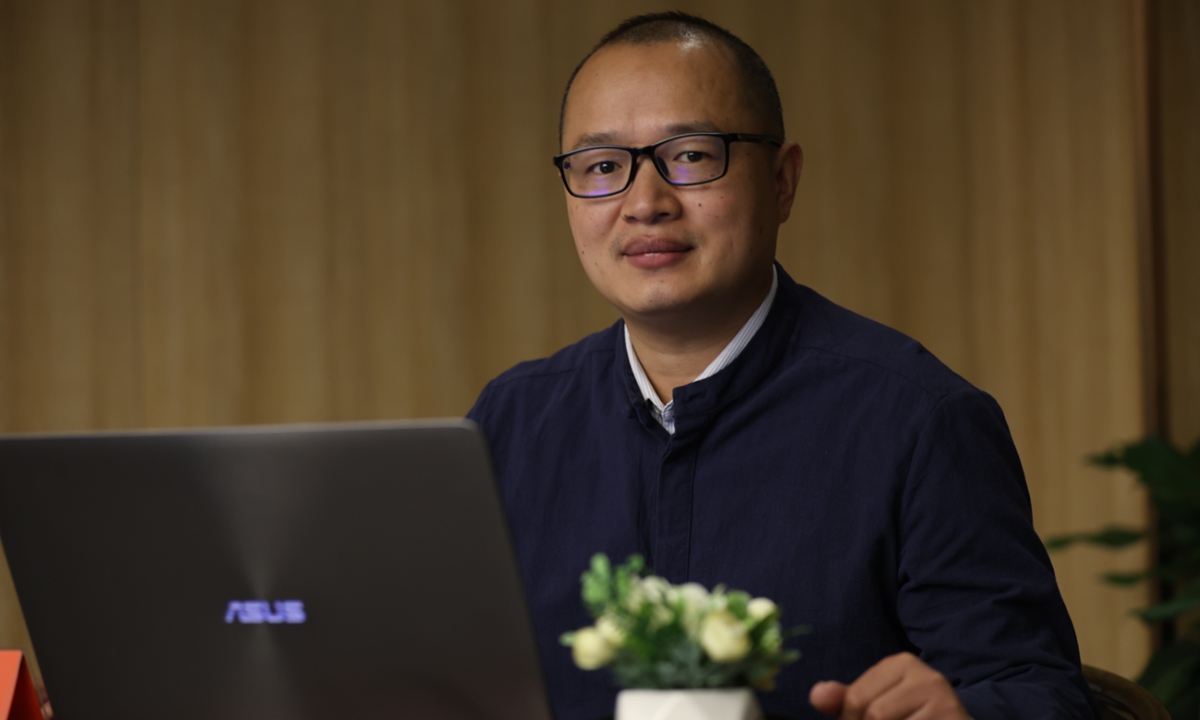
Shu Guangqiang
Editor's Note:The vast collections of Chinese cultural relics scattered across the globe in overseas museums have created a demand for professionals trained in their restoration. Due to differences in cultural backgrounds and art forms, there are significant disparities between Chinese and foreign restoration practices. This article by Shu Guangqiang, a specialist in the restoration of ancient paintings and calligraphy works, explores the current state of overseas collections of Chinese cultural relics and their restoration, primarily focusing on museums in Japan and the West.
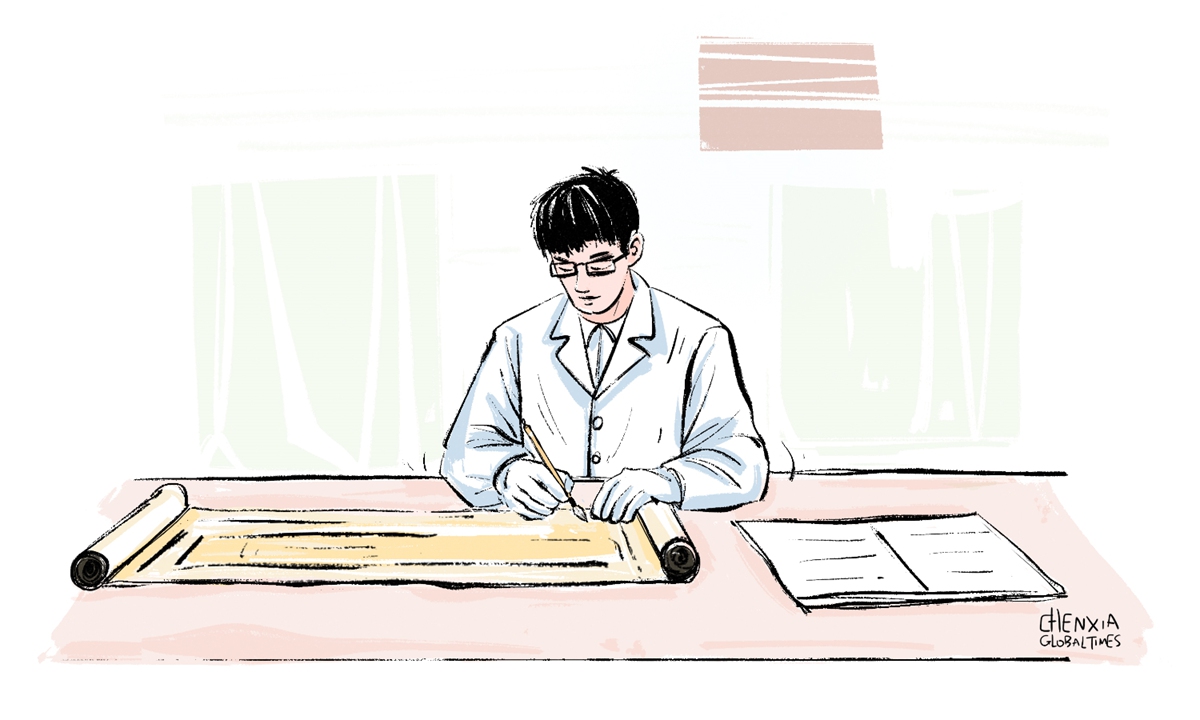
Illustration: Chen Xia/GT
When it comes to restoring Chinese cultural relics, there are many differences between domestic and foreign approaches. Broadly speaking, these differences involve historical and cultural significance, restoration processes, preventive preservation, technological applications, aesthetic values, and exhibition practices. On a micro level, they manifest in specific techniques such as cleaning, mending, inpainting, and retouching. Furthermore, these issues touch upon academic questions: how to maintain localized research, how to adapt Western methods, and how to address boundaries, material usage, supplemental materials, adhesives, technological integration, and evaluation standards.
The external environment adds further complexity: the blending of cultures and mutual learning between civilizations has led to a clash of ideas rooted in different cultural contexts. New materials and methods continually emerge, with technology increasingly replacing manual labor, thereby diminishing the central role of human craftsmanship in restoration. Disciplines are more specialized, divisions of labor more defined, and interdisciplinary knowledge is being applied more extensively than ever before.
Restoration methods are diversifying, presenting both opportunities and challenges. On one hand, this diversification revitalizes traditional techniques, introducing new possibilities and enriching restoration systems. On the other hand, it risks blurring the boundaries of traditional Chinese restoration techniques, weakening their cultural essence and potentially leading to multiple, conflicting value judgments. While the dynamic exchange of ideas stimulates creativity among restorers and scholars, it also introduces varying degrees of confusion, as standards for restoration have become increasingly fragmented.
Faced with this situation, discussions about Chinese restoration techniques must avoid exclusively emphasizing either traditional or Western methods. Nor can a single standard be used to evaluate both approaches. Acknowledging this reality and reflecting on its advantages and disadvantages is a necessary prerequisite for exploring the current state of restoration and future development directions.
Chinese cultural relics are dispersed across museums, art galleries, libraries, archives, galleries, foundations, professional associations, antique shops, and private collections worldwide. Based on incomplete statistics, there are over 1,000 institutions and countless private collectors across Asia (particularly Japan), Europe, North America (primarily the US), and the Middle East that hold Chinese artifacts. These collections include invaluable treasures and masterpieces numbering in the millions.
In Japan, institutions such as the Tokyo National Museum, Osaka City Museum of Fine Arts, Nara National Museum, Kyushu National Museum, the Mitsui Memorial Museum and the Taito City Calligraphy Museum hold significant Chinese artifacts. For example, rare Tang Dynasty (618-907) copies of masterpieces like Sangluan Tie (lit: The Letter of Loss and Confusion) and a calligraphy work by renowned Chinese calligrapher Wang Xizhi of the Jin Dynasty (265-420) are housed in Japan's Museum of the Imperial Collections, Sannomaru Shozokan.
In the US, major institutions like the Metropolitan Museum of Art, the Freer Gallery of Art, the Cleveland Museum of Art, and the Boston Museum of Fine Arts hold extensive collections of Chinese cultural treasures. Similarly, European countries such as the UK, France, Germany, and others possess vast quantities of Chinese cultural relics.
The preservation and restoration of these artifacts vary by region. In Japan, Chinese relics are primarily restored and preserved by local experts, though some institutions employ Chinese restorers. Japan's restoration efforts are largely government-led, with regulations, subsidies, and private-sector involvement. Restoration techniques in Japan often trace their origins to China but have been adapted to local contexts, forming a comprehensive system.
Some Western museums, such as the British Museum, have made significant mistakes due to a lack of understanding of Chinese culture and restoration techniques. For instance, Admonitions of the Instructress to the Court Ladies, traditionally attributed to Chinese painter Gu Kaizhi of the Eastern Jin Dynasty (317-420), was once remounted as a folding screen by the British Museum, only to be reverted to its original handscroll format later. Similarly, a rare Chinese copperplate-printed book in the British Library was rebound in Western-style leather before being restored to its original Chinese format. These examples highlight the importance of cultural understanding in restoration.
Due to differences in Eastern and Western traditions and cultures, philosophies and methods of cultural relic restoration also differ. Western restoration is based on a science-centered approach, emphasizing scientific analysis, precise data, and rational judgment. In contrast, Chinese restoration focuses on the restorer's comprehensive skills, relying on experience, individuality, and a relatively subjective approach. These differences often lead to debates during practical operations.
Chinese cultural relic restoration is a traditional craft that has grown out of the cultural soil of China, characterized by its uniqueness, professionalism, and established methods. Overseas institutions restoring Chinese artifacts should employ dedicated professionals, as non-professionals attempting such work recklessly could result in disastrous consequences.
Many Western museums now acknowledge that Chinese artifacts should be restored by Chinese experts. Notable restorers like Qiu Jinxiang at the British Museum and Gu Xiangmei at the Freer Gallery of Art have contributed significantly to the field. Western museums typically have fewer restoration professionals compared to China but compensate with rigorous evaluations, documentation, and material analysis. Their scientific and meticulous approach is worth learning from, despite their resource constraints.
To better protect and utilize overseas Chinese cultural resources, the following measures are recommended.
First, we should strengthen the training of Chinese restoration techniques domestically and recommend skilled restorers to overseas institutions.
Second, we should promote Chinese restoration methods through academic exchanges, media, and training programs, and provide financial support for certified restoration projects.
Last, Chinese restorers should be encouraged to share their philosophies while participating in global restoration efforts.
The restoration and rescue of cultural relics is a long and arduous endeavor. Whether these relics are in China or overseas, Chinese restoration experts have a responsibility to contribute to their preservation, ensuring that Chinese restoration techniques, together with overseas treasures, play their rightful role in the inheritance of Chinese and global culture.
The author is restorer of ancient Chinese paintings and calligraphy at the Chinese National Academy of Arts, and a specially appointed researcher at the National Museum of China
